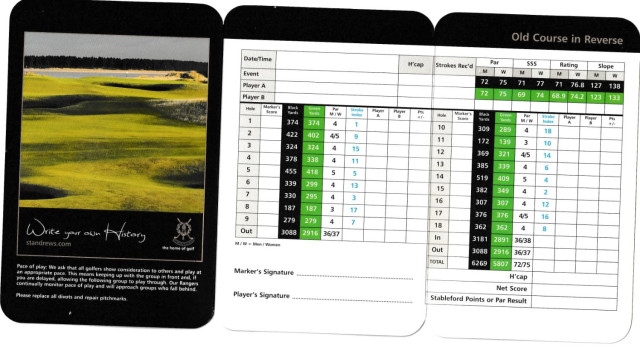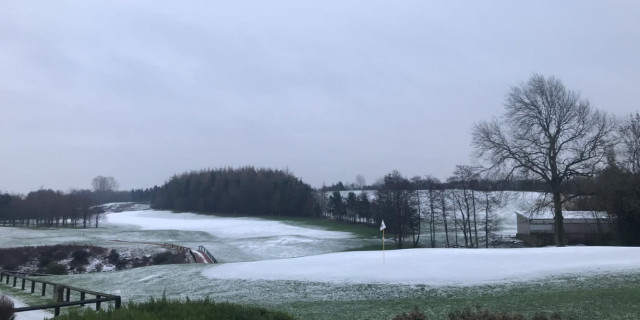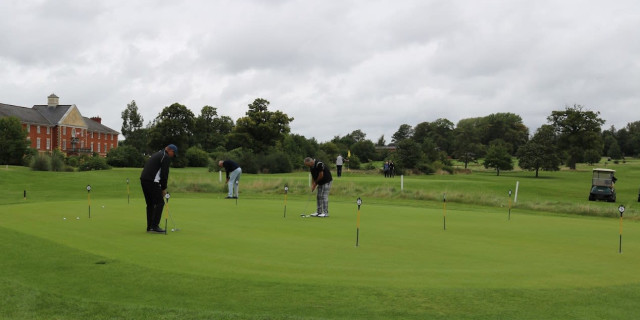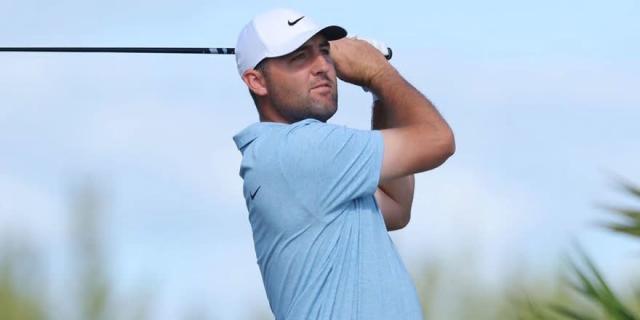
Playing The Old Course at St Andrews in Reverse
Considering it has existed for 600 years, you may find it hard to imagine that there is anything new to experience at The Old Course, but for several hundred lucky golfers who recently secured a tee time to play the revered layout in reverse, they gained a fresh perspective of the planet's most venerable golfing venue.
St Andrews is the most evocative of towns that has enduringly married the old with the new. Young students walk streets that are forever patrolled by ghosts of the past, while medieval architecture houses modern amenities that educate and inspire future generations.
And turning back the clock to a bygone era was the Links Trust's idea to invigorate enthusiasts of today.
What is The Old Course in Reverse?

Historians will know that the links of St Andrews has evolved naturally through time and centuries ago it consisted of outward and inward holes that were played to the same greens from the same fairways, meaning that it could either be played in a clockwise or anti-clockwise direction.
Reduced from 22 holes to 18 holes in 1764, things largely remained the same until adjustments were made by the keeper of the greens Daw Anderson (father of three-time Open champion Jamie) in the 1850s and more famously by Old Tom Morris, who in 1870 created the 1st green that we know today by separating it from the 17th, which led to the creation of the routing that has become iconic through the 30 Open Championships that have been contested here since.
From that new 1st green, St Andrews was played primarily in an anti-clockwise direction, but the clockwise layout remained available for decades, with play generally alternating between the two each fortnight.
However, over time, the clockwise (or reverse) routing was gradually phased out and was only used for select days of the year until disappearing entirely before it was reintroduced to commemorate St Andrew's Day in 2019.
When you walk the course, it's always been noted that some bunkers are located in seemingly random places, but it all makes sense when you consider they were engineered for when the holes were played in the opposite direction.
It's, therefore, no surprise that many golfers have been fascinated by the prospect of playing it, not least Tiger Woods, who said in 2015: "I’ve always wanted to play it backwards, one time before I die. I think that would be just a blast because I can see how certain bunkers - why would they put that there? And then if you play it backwards, you see it. It’s very apparent. That’s totally in play. That one day would be a lot of fun to be able to do."
That day came for a lot of golfers just last week when the Links Trust staged three days of play in reverse. Fortunately, I was among those who were pulled out of the ballot for Monday, 1 April, but this was no April Fool's Joke, instead being a chance to experience something that had long intrigued me.
Just for a quick explainer, when playing the clockwise layout, you start on the 1st tee and play to the 17th green, then the 18th tee to the 16th green, and so on, before finishing with a tee shot from the 2nd hole to that familiar putting surface that sits in the shadow of the Royal & Ancient Clubhouse and Hamilton Grand. You can see all 18 holes in detail below.
Playing The Old Course in Reverse

Having lived in St Andrews for eight years, I've played the Old regularly and walked the course even more often, providing the opportunity to imagine and visualise what the reverse layout would be like to take on. Standing on the first tee with a club in my hand both felt oddly familiar and completely different as focus gazed towards the 17th green for the approach shot.
What became instantly apparent was how logical much of it was. It made as much sense to play this way as it did the other direction that I knew so well, especially on the "front" nine that boasted several tremendous holes, my favourites being the 5th (a par 5 where you play from the normal 15th tee to 13th green) and the 7th, playing roughly from the conventional 13th tee to the 11th green.
Those who have played the Old in the usual way will be aware that on the 12th you cannot see any of the bunkers on the fairway from the tee as they are turned towards the opposite direction, meaning that (in this case) when you head back up that fairway, they are visible on what is a thrilling par 4.
Avoiding them off the tee is hard enough but you then face an approach to the 11th green that is guarded ominously by Hill Bunker, which Bobby Jones famously tore his scorecard up after failing to escape from during the 1921 Open Championship. Fortunately, I avoided Bobby's bunker and kept my sanity intact.
Speaking of which, it's from there when things become a little mad when you hit from the 12th tee (directly over the 11th green) towards the 10th green in what is a relatively long par 3 on a chilly day. The reverse layout is certainly not from the days of health and safety regulations.
Generally, when you're playing the course normally, the safe-miss is to the left, but naturally when playing the reverse routing, that is flipped around and right is the most comfortable, if not always optimum place to be as the Old has always rewarded aggressive tee shots.
Now, it must be said that you don't always tee off from exactly the place that golfers would have done back in the day, and it's also essential to note that the links is not conditioned to be played this way anymore.
Some keen observers (rightly) bemoan the amount of long grass that now resides on the Old, but the impact of this is clearest when playing the course in reverse as you have to hit over acres of rough to reach some of the greens towards the end of the round, making a classic linksy running shot impossible.
That somewhat compromises the general playability of the clockwise layout, with a couple of the fairways also being far narrower than they would be if the course was routinely prepared for play in this way.
Is The Old Course in Reverse Better?
Having now played it both ways, I believe that the "normal", anti-clockwise layout is the far superior of the two options. While some of the holes on the reverse course are superb, it's a big loss to not play holes such as the 11th, 14th and 17th in the conventional manner, which have a strong case to rank among the greatest par 3s, 5s and 4s in the world.
That said, the fact that this narrow stretch of land can accommodate two different layouts is remarkable and your appreciation for the landscape is only heightened by playing the course in reverse.
Playing The Old Course is always an education. Each time you stride these fairways, you are presented with unique challenges and options as the place dramatically changes by the day depending on the wind direction and pin positions. It never feels the same twice, and the treat of the reverse layout only reinforces my view that there is nowhere else in golf quite like it and that St Andrews remains the ultimate treasure in the game.
See All 18 Holes Below
About the author

Kieran Clark is the Digital Editor of Golfshake. He oversees editorial content, community engagement, forums, and social media channels. A lifelong golfer from the Isle of Bute in Scotland who has now lived in St Andrews for a decade, he began playing at the age of five and maintains a passion for exploring courses, with a particular affection for historic layouts. Kieran regularly contributes in-depth opinion pieces and features, drawing on his enthusiasm for the game and its culture.
Tags: The Old Course st andrews GOLFERS Golf daily picks



























